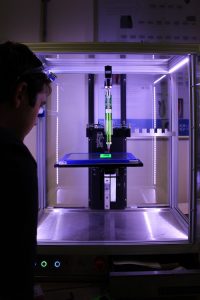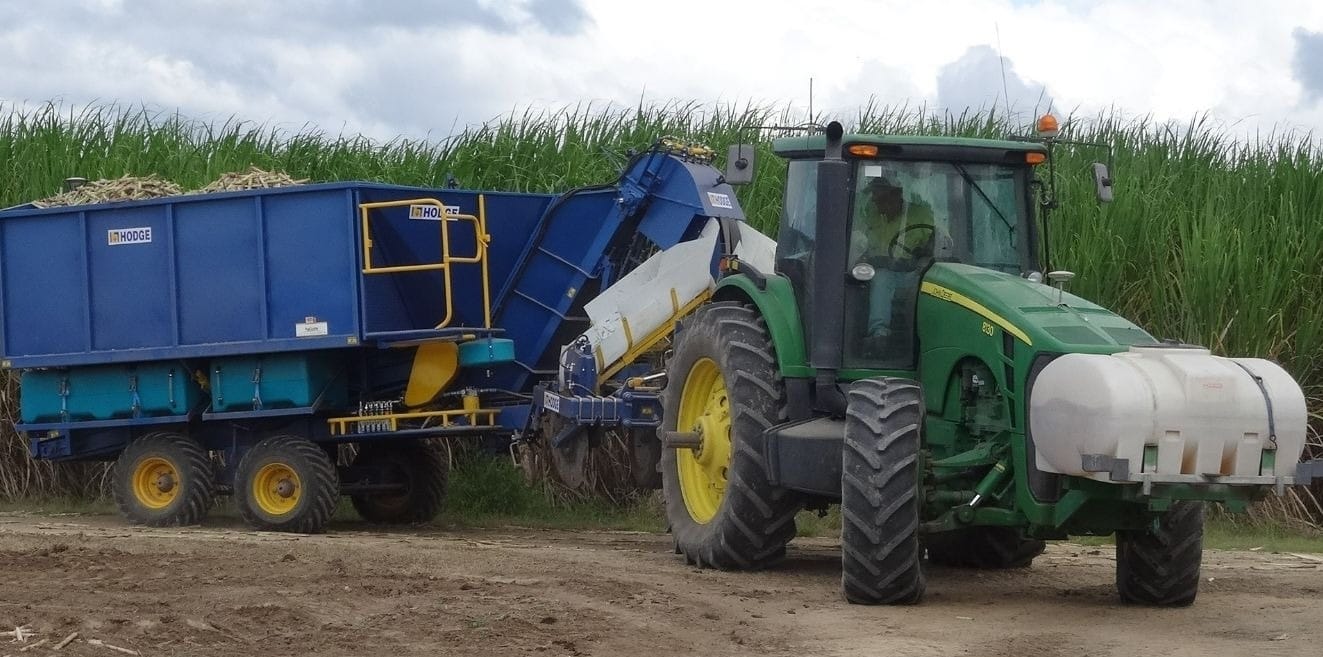Understanding Customer Value

The recent Best Practice Network National Summit with its theme of “People, Technology and Business” has provoked a lot of discussion at TXM. Two key themes emerged for me. These are, the ways in which technology will transform how business is done and the way in which established industries will be disrupted by technology and other forces. David Platt provided particularly interesting insights in to the way industries are disrupted and will be disrupted in the future.
My summit presentation was on the theme “Does Industry 4.0 Mean the End of Lean”. This made me think hard about the way in which new technology is changing industry and the relevance of Lean in that context.
Finally, I was fortunate to go to the Innovate Expo recently in Geelong and hear from a range of interesting speakers on Industry 4.0 and innovation, including Gus Balbontin, former CTO of Lonely Planet.
What Does All This Mean for Lean?
I run a lot of Lean workshops and when I ask most groups “What is Lean”, they will generally tell me that it is about the elimination of waste. This is correct, but only part of the story. The problem with a focus on waste elimination is that it focuses us on the things that DON’T add value to the customer. Eliminating waste will save money and it will improve competitiveness, however it tends to assume that the value we add to the customer and the way in which we add it will stay the same.
When I consider companies that have disrupted established industries, there seem to be two common themes:
- A unique or different insight in to what constituted value for the customer.
- The use of technology to deliver that value more effectively.
Whether you think of the iPhone, Uber, digital photography or TripAdvisor the winner in disruption has understood the customer need better and then applied technology to better meet that need. In the process they have created more value for customers at lower cost. Businesses in these industries who were focused on improving existing business models and just “eliminating waste” found themselves being overwhelmed by the change brought on by the disruptors.
How Do You Apply Lean Thinking In this New World Order?
First Understand Value
Another question I often ask workshop participants is “How do you create value for your customers?”. Surprisingly many people struggle to answer this. They tend to think in terms of their corporate goals so that “on time delivery” and “first time quality” are “value”. These goals, however laudable are simply measures of how well you do what you do.
In most industries today, delivering a quality product on time is simply taken as a given and does not confer any competitive advantage to the company providing it.
I often frame the question differently along the lines of “what is the customer buying when they buy your product?”. Again, I often get vague answers like “peace of mind” or “experience”. If you believe that is what your customer views as value, then expect to be disrupted.
In fact, the answer to the “what is value” question is closely related to the “what business are we in?” question.

The keynote I saw from Gus Balbontin, formerly of Lonely Planet brought this in to focus. Gus joined Lonely Planet at a difficult time, when it had just been purchased by BBC and was starting to be disrupted by the rise of the internet in the early 00’s.
At that time, Lonely Planet believed that it was in the travel books business. If you accept this definition, then every step-in converting paper and ink into a book and getting that book to the customer is a value-added step.
First, you would draw a value stream map for book production and distribution and try and eliminate waste from that flow. As a frequent traveller and one-time owner of many Lonely Planet guides, I believe that what customers valued from Lonely Planet was relevant and up to date information about the place that they were in.
Whether this was delivered through a smart phone or a travel book did not matter. In fact, the smart phone was a lot more convenient as the information was constantly up to date and took up a lot less space in the luggage than half a dozen travel books.
Now Lonely Planet is a great company and their travel books are still great. Their information is probably more accurate than the sometimes hit and miss reviews on TripAdvisor. However, it would seem that Lonely Planet have missed a massive opportunity to convert their position as a world leader in travel books in to a world leader in travel. A better understanding of customer value might have delivered this transformation, but it is instead TripAdvisor that has achieved this change.
Likewise, newspapers and television thought they were selling their advertisers “access to eyeballs” and so pricing and availability was driven by the sheer numbers of people likely to see the content surrounding the advertising. Google instead provided access to buyers, dramatically increasing the cost effectiveness of advertising.
How to Apply This to Your Business?
I think the key to this is asking a series of questions about your business. The first are really strategic marketing questions.
- “What business are we really in?”
- “What is the customer need that we are meeting?”
- “What is the problem that our customer has that our product or service solves?”
Answering these questions might involve asking customers, observing what competitors large and small are doing and looking for analogues in other industries. Don’t rush it, be prepared to get advice from outside your industry.
Once you have an understanding of this, then you need to ask my “Lean” question “What is it that we do in our business that adds value to the customer?”. This might be very challenging. In the Lonely Planet example, it would be arguable whether the book production and distribution process added any value at all in meeting the customer’s need of accurate and timely information.
Another question might be to ask, “Is there a better way to deliver this value to the customer?”. In this context look at available technology and how it could be used to meet that customer need. Insights from other similar industries can help.
Map the New Value Stream
Once you have defined what is value in your business, you can then define your new value stream and map your flow. This usually means defining a series of process steps. For each step you need to really challenge “Does this step add value, or can it be eliminated?”
For example, if I was to map the flow for a taxi service a few years ago, the taxi owner and the dispatcher service would each have been seen as part of the value stream and each would have believed they were adding value. However, if I redefine the customer need from a “Taxi” to a “safe, convenient and cost-effective form of individual public transport” then the value of the taxi owner and dispatcher company becomes more dubious. Enter ride sharing platforms that connect the passenger directly with the driver and allow the passenger to rate every ride to ensure quality of service. So, challenge hard at every step in your process whether that step REALLY adds value in helping you meet your customer need.
Consider Technology in the Future State
In developing a future state, Lean coaches often assume that the key processes will remain unchanged, but instead the focus is on how product and services flow between processes and the waste that occurs there. In redefining your process to meet customer needs, you need to challenge the current technology and processes. Using a creative process such as “3P” can help you imagine different ways of delivering customer value, using new technology and applications. Ask questions like “What if we were able to…?” and don’t be quick to throw out “crazy” suggestions.
What you are then aiming to do is to design a new process from the ground up to deliver your product or service. This will include how the product or service will be created, how it will be delivered to the customer, the communication and information flows that will guide it through the process and the technology and process changes needed to make it all happen.
Move Fast and Be Prepared to Fail
Business is about taking risk, but in many cases, companies don’t reward risk. Instead they punish failure. As a result, employees tend to default to “the way we have always done things” because it is safer. In leveraging technology to change your business, you may have to face failure. Therefore, be prepared to try things, fail and learn. The mistake is if you don’t learn from your failures, not failure itself.
What About Waste?
Re-designing your process from the ground up and focusing on how you create value will inevitably eliminate waste. When we eliminate a process step because it does not add value, we are eliminating waste.

What About Industry 4.0?
The clear conclusion I arrived to at listening to the range of innovation speakers over the past month is that focusing on technology before you understand customer need is a recipe for wasteful investment. The companies that have transformed their industries have used technology as an enabler, not as an end in itself.
TXM Article: Does Industry 4.0 Mean the End of Lean
In fact, there is a risk that some industrial technologies risk making your business more vulnerable to disruption rather than less. For example, spending a lot of money to automate existing processes might lock you in to those processes. Likewise, heavy investment on process monitoring and optimisation might divert resources and focus from the need to completely change the underlying process you are trying to optimise. On the other hand, better process control through advanced optimisation or a lower cost base from automating, might enable you to compete in new markets where you were previously uncompetitive.
Overview
Predicting exactly where technology and social change will take us and our industries in the next few years is impossible. We have seen so many surprises in the past two decades, there are no doubt many more to come. However, the Lean message of “start with the customer and work back” has never been more important. While eliminating waste will remain an important part of Lean Thinking, I am convinced that understanding and maximising customer value will be the key to success for businesses.





